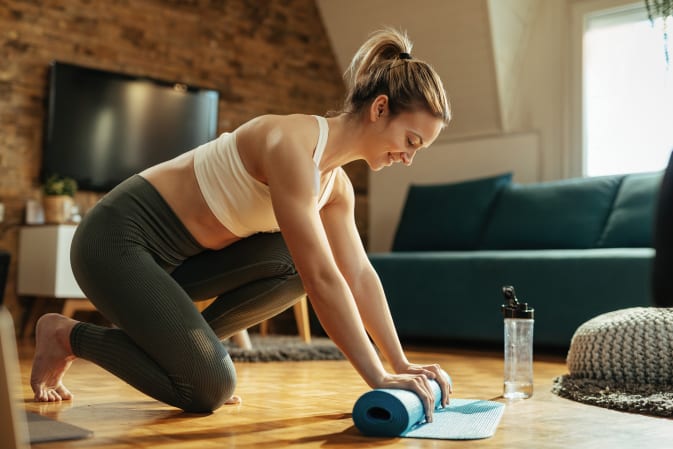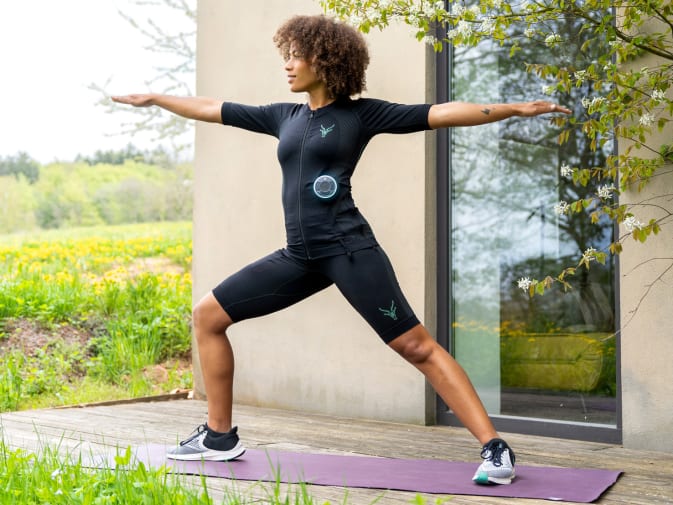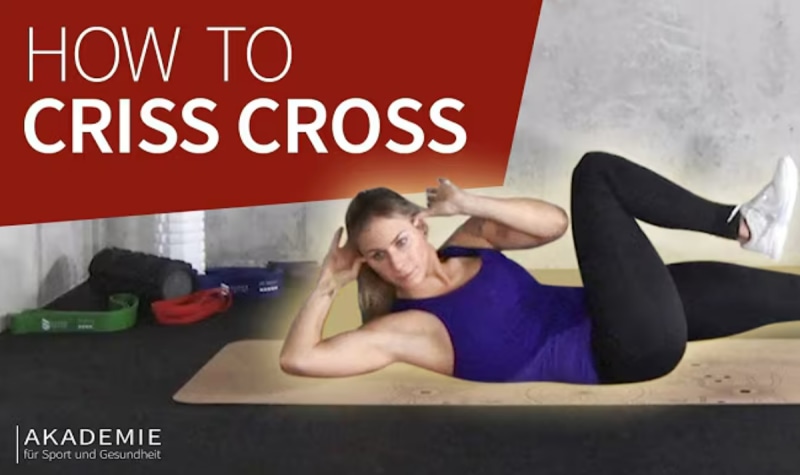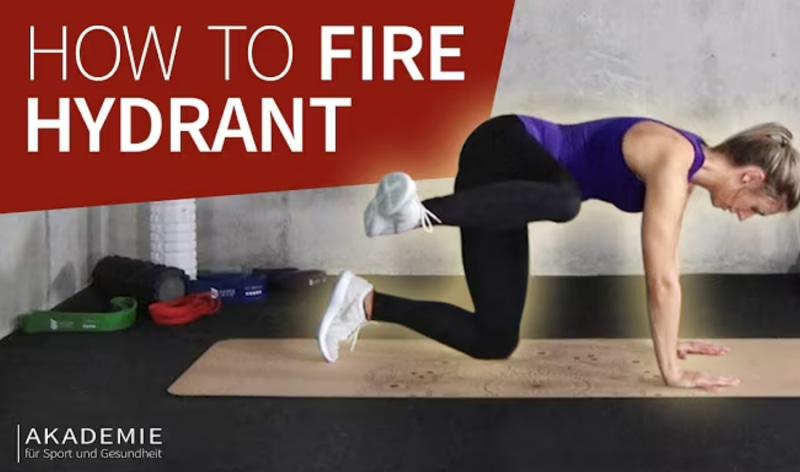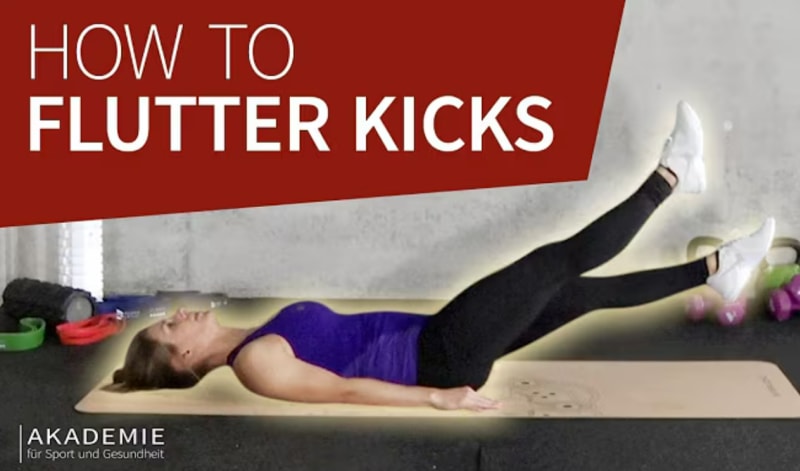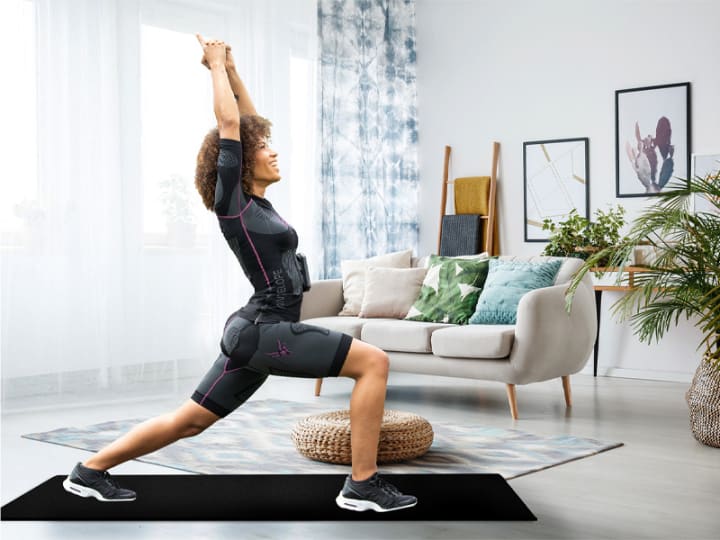Pelvic floor training: how to strengthen your inner centre
Would you like to get your pelvic floor back into shape or strengthen it as a preventative measure? All organs located in the pelvis, as well as the back, shoulders and joints, benefit from a trained inner centre. With a healthy, elastic pelvic floor, you will have no complaints and therefore a better quality of life. We show you specific exercises - and how you can intensify them with EMS training.
Weak pelvic floor: These are the causes
A weak pelvic floor is an issue for both women and men: it can be responsible for incontinence and impaired sexuality. In severe cases, the pelvic organs such as the uterus and bladder can also descend in women. There are many reasons for this: pregnancy and childbirth, obesity, operations or years of physical labour can overstress the muscles and connective tissue of the pelvic floor. Competitive sport or falling oestrogen levels during the menopause also put strain on the pelvic floor. Some people are also genetically predisposed.
Who benefits from pelvic floor training?
Everyone needs a well-trained pelvic floor - regardless of age. During labour, the pelvic muscles are put under enormous strain - and therefore need gentle training in the postpartum period to function well again. As a strength athlete, you need a stable core. This is particularly important for dynamic exercises such as weightlifting. As a senior citizen, you can reduce the likelihood of becoming incontinent with regular exercise - or alleviate the symptoms you may already have. Do you work sitting down a lot? Improve your posture with regular pelvic floor exercises. This will prevent back pain.
Glute bridges
Russian twists
Cat cow
Squats
In addition to targeted exercise sessions, endurance sports also help your pelvic floor. Walking, swimming and cycling, for example, are all good options. These sports help you train your inner centre by activating different muscle groups throughout your body. Yoga and Pilates are also good options. Many exercises focus on the centre of the body.
Support the pelvic floor with EMS fitness
Would you like to try EMS first? Then practise with the Corefit, our EMS belt for training the abdominal muscles. You can also use it to target the pelvic floor muscles.
With EMS, you can train wherever you want: in the gym, at home or outdoors. Our customer service team will be happy to advise you on the Antelope Go app and our EMS clothing. By the way, it is tailored precisely to the proportions of women and men - so that the electrodes provide intensive training impulses in the necessary places.
We have also investigated the effect of EMS on people with incontinence problems in studies. The initial results are positive.
Our tips for everyday life
Always consciously tense your pelvic floor first when lifting heavy objects. Do you have a cold? Then the best way to cough or sneeze is to turn your head and upper body to the side over one shoulder. This will protect your pelvic floor.
You can even exercise while waiting at the supermarket checkout or at the bus stop - and do so inconspicuously. Tense your pelvic floor muscles and hold them for about ten seconds. Then relax your muscles for ten seconds and repeat this a few times.
Make sure you breathe correctly when practising
Breathe in and out deeply while you exercise. Combine the tension with the exhalation. This will ensure that you don't put too much strain on your pelvic floor. Wondering what the pelvic floor has to do with breathing? It is also known as the diaphragm of the pelvis. It works in synchronisation with the "real diaphragm".

